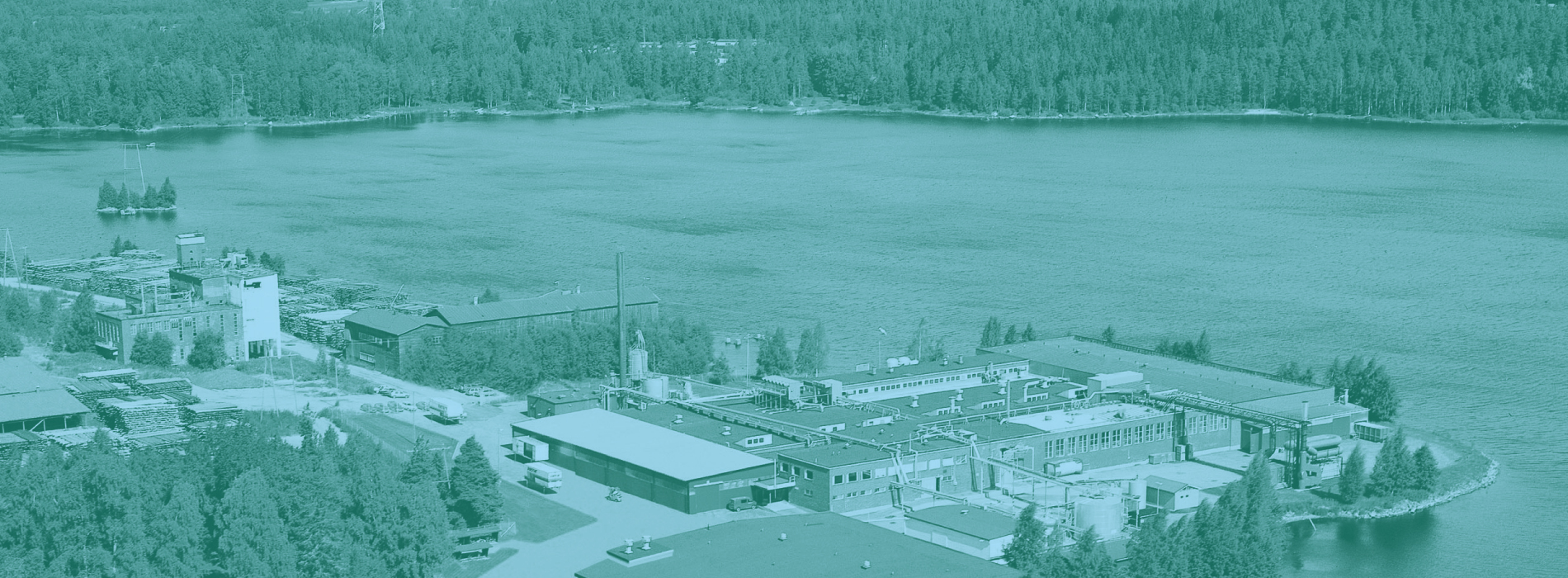
Materialisierung von Nachhaltigkeit
In unserem Bestreben nach mehr Transparenz zielt der Nachhaltigkeitsansatz der Formica Group darauf ab, unsere Daten zu unseren Umweltauswirkungen sowie unsere Pläne zur Verbesserung dieser Daten zukünftig proaktiv zu kommunizieren.
Langlebige Oberflächen mit erneuerbaren Materialien
Seit 1913 – dem Jahr, in dem die Formica Group das erste Hochdrucklaminat erfand – besteht das Ziel darin, widerstandsfähige und langlebige Produkte zu schaffen. Langlebigkeit bedeutet zu verhindern, dass die Produkte ausgetauscht werden müssen, und folglich der Ressourcenverbrauch und die Abfallproduktion sowie die damit verbundenen Umweltauswirkungen reduziert werden. Dies ist von entscheidender Bedeutung, wenn wir das Kreislaufmodell der Nachhaltigkeit betrachten. Darüber hinaus wird für die Herstellung unserer dekorativen Schichtstoffe hauptsächlich Papier aus nachhaltiger Produktion – also ein nachwachsender Rohstoff – verwendet.
Group Position Paper
Making Real Impact For Less Impact
Unser Nachhaltigkeitsansatz unterstreicht das ständige Engagement von Broadview, der Holdinggesellschaft, zu der wir gehören. Das beinhaltet, dass wir Investitionen tätigen, um die Umweltauswirkungen aller Betriebsabläufe und Produkte zu minimieren und somit unsere Ökobilanz zu verbessern. Diese Langzeitstrategie besteht aus zwei Hauptsäulen: dem Ersetzen der am stärksten belastenden Rohstoffe und der Verbesserung der Effizienz unserer Materialien und Prozesse.
Neben der Verbesserung des Herstellungsprozesses sucht unsere Gruppe ständig nach weniger belastenden Rohstoffen. Obwohl Schichtstoffe von Formica® bereits teilweise aus erneuerbaren Materialien (Holzfasern) hergestellt wird, konzentriert sich Nemho – unser Kompetenzzentrum für Technologie – darauf, den Anteil an erneuerbaren Materialien in unseren Produkten weiter zu erhöhen, indem Rohstoffe fossilen Ursprungs durch biobasierte Alternativen ersetzt werden.
Darüber hinaus spielt die durch die Oberflächeneigenschaften des Schichtstoffs gewährleistete Langlebigkeit, wie die Widerstandsfähigkeit gegen Kratzer, Stöße, Abrieb, chemische Substanzen und Hitze, eine strategische Rolle, wenn es darum geht, die Notwendigkeit eines Produktaustauschs zu vermeiden. Dies führt zu einer Verringerung des Ressourcenverbrauchs und der Abfallproduktion sowie der damit verbundenen Umweltauswirkungen.
Unsere Zulieferer spielen ebenfalls eine wichtige Rolle. Wir möchten einen aktiven Dialog mit ihnen über die Verbesserung unserer Umweltbilanz fördern. Außerdem streben wir danach, unsere Kunden bei ihren Nachhaltigkeitsherausforderungen zu unterstützen. Dies steht auch in engem Zusammenhang mit Langlebigkeit, da wir Produkte herstellen, die eine lange Lebensdauer haben und daher nur selten ersetzt werden müssen.
Obwohl wir also immer noch Umweltauswirkungen verursachen, arbeiten wir aktiv daran, diese zu verringern.

Nachhaltigkeitskonzept
Als Teil der globalen Materialbereiche von Broadview Holding – neben anderen bekannten Marken wie Trespa, Arpa, FENIX, Westag, Homapal und Direct Online Services – ist die Reduzierung der CO₂-Bilanz ein wichtiger Bestandteil unserer allgemeinen Nachhaltigkeitspolitik.

Klimabilanz und Zertifizierungssysteme
Die Verbesserung der Klimabilanz von Formica®-Laminat ist eine Schlüsselkomponente unseres Nachhaltigkeitsansatzes. Wir sind davon überzeugt, dass die Verbesserung unserer Ökobilanz nicht nur der richtige Weg, sondern auch für das Fortbestehen der Marke entscheidend ist.
Frequently Asked Questions
We use the cradle-to-gate scope for our on-site Life Cycle Assessments (LCAs), because we focus on the stages that are under our control and that we can influence. We are able to improve our processes to make them more efficient and we are continuously working towards using less impactful raw materials. Moreover, for the lifecycle stages that are after our factory gate, we currently don’t have enough data which requires us to make additional assumptions in terms of the disposal of our laminate sheets. Lastly, we are currently waiting on upcoming regulations and a general consensus on the topic of carbon storage benefits of long-lasting products at the end of their lifetime.
Glossary
- Cradle-to-gate: Refers to a partial life cycle assessment where all inputs (raw materials and energy) and outputs (emissions and wastes) are considered from the extraction of raw materials (cradle) to the product is ready to leave the factory (gate). The use and disposal/re-use phases of a product’s life cycle are not taken into account in cradle-to-gate.
- Cradle-to-grave: Refers to the full life cycle assessment, from the extraction of raw materials (cradle) to the transportation, manufacturing, use, and finally disposal or re-use of the product (grave). All inputs (raw materials and energy) and outputs (emissions and wastes) are considered for all the life cycle stages.
Formica® Laminate Environmental Product Declaration (EPD) at formica.info
